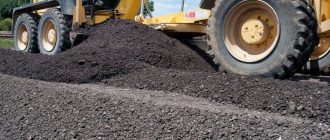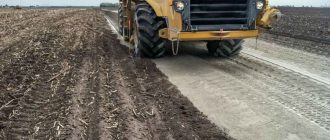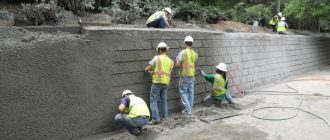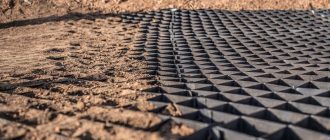What is Soil Stabilization?
Soil stabilization is a crucial technique in the field of construction, used to improve the strength and durability of soil. It involves the use of various materials and methods to enhance the properties of soil, making it suitable for a wide range of applications.
One of the main benefits of soil stabilization is its contribution to sustainability. By stabilizing the soil, construction projects can minimize the need for additional materials and reduce the overall environmental impact. This is a significant advantage, especially in today’s world where sustainability is a top priority.
There are several methods of soil stabilization, each tailored to suit different soil conditions and project requirements. Some commonly used techniques include chemical stabilization, mechanical stabilization, and biological stabilization. These methods involve the use of additives, such as cement, lime, or fly ash, to improve the soil’s engineering properties.
When soil stabilization is properly executed, it can greatly enhance the soil’s strength and stability, making it suitable for a variety of construction projects. It can improve the load-bearing capacity of the soil, prevent soil erosion, and reduce the potential for settling or shifting. This ultimately leads to safer and more durable structures.
What is Soil Stabilization?
Soil stabilization is the process of improving the properties of soil by using various materials and techniques. It involves enhancing the strength, durability, and compaction of soil to make it suitable for construction purposes.
Stabilizing soil is essential in construction projects to ensure the stability and longevity of structures. By stabilizing the soil, it becomes less susceptible to erosion, settlement, and other undesirable effects.
There are different techniques used in soil stabilization, including chemical stabilization, mechanical stabilization, and physical stabilization. Each technique involves the use of different materials and methods to improve the soil’s properties.
Chemical stabilization involves the addition of chemicals such as lime, cement, fly ash, or bitumen to the soil. These chemicals react with the soil particles, resulting in improved strength and stability. This technique is often used to stabilize clayey soils.
Mechanical stabilization, on the other hand, involves the use of mechanical means to compact and reinforce the soil. Techniques such as compaction, grouting, and soil nailing are commonly used in mechanical stabilization.
Physical stabilization involves the use of geosynthetics or geotextiles to improve the soil’s properties. These materials are placed within the soil, providing reinforcement and preventing soil erosion.
Soil stabilization offers several benefits, including increased load-bearing capacity, reduced settlement, improved durability, and enhanced sustainability. It can also help prevent soil erosion and reduce the need for excavation and replacement of unsuitable soil.
Overall, soil stabilization plays a crucial role in the construction industry by ensuring the stability and safety of structures. It allows for the use of marginal soils and promotes environmental sustainability by reducing the need for importing suitable soil or disposing of excess soil.
Why is Soil Stabilization Important?
Soil stabilization plays a critical role in construction and various other industries. It involves the modification of soil properties to enhance its strength, durability, and overall performance. By stabilizing the soil, it becomes more appropriate for construction activities and increases the lifespan of structures built on it.
Compaction is commonly used to stabilize soil, but it has its limits. Therefore, other techniques and methods are often employed to achieve better soil stabilization results. These may include the use of additives, such as cement, lime, or fly ash, that chemically react with the soil to improve its engineering properties.
There are several reasons why soil stabilization is important:
- Enhanced load-bearing capacity: Soil stabilization techniques increase the load-bearing capacity of the soil, making it suitable for constructing heavy structures such as buildings, roads, and bridges. This ensures that the soil can withstand the applied loads without excessive settlement or failure.
- Improved compaction: Stabilizing the soil helps improve its compaction characteristics. Compacted soil is less prone to settlement and provides a stable foundation for structures. It also minimizes the risk of differential settlement, which can cause damage to buildings and infrastructure.
- Increased durability: Soil stabilization enhances the durability of the soil, making it resistant to erosion, weathering, and other environmental factors. This is crucial for long-term sustainability and maintenance of infrastructure.
- Cost savings: By stabilizing the soil, construction projects can avoid costly repairs and maintenance in the future. Stabilized soil reduces the need for frequent recompaction and decreases the chances of structural failures, saving both time and money.
- Environmental benefits: Soil stabilization techniques often involve the use of eco-friendly and sustainable materials, such as fly ash or lime, which helps reduce the environmental impact of construction activities. This promotes sustainable development and reduces the use of non-renewable resources.
In conclusion, soil stabilization is essential in the construction industry for creating a stable and durable foundation for structures. It improves the load-bearing capacity, compaction characteristics, and durability of soil, leading to cost savings, environmental benefits, and long-term sustainability.
Types of Soil Stabilization
Soil stabilization is an important aspect of construction, as it helps improve the properties of the soil and make it suitable for various applications. There are several techniques and methods for soil stabilization, each with its own benefits and applications. Here are some common types of soil stabilization:
- Chemical Stabilization: This method involves the use of chemicals to improve the stability and strength of the soil. Chemical additives such as lime, cement, and fly ash are mixed with the soil to enhance its compaction and reduce its plasticity. These additives react with the soil and bind its particles together, resulting in improved strength and stability.
- Mechanical Stabilization: Mechanical stabilization techniques involve the use of mechanical processes to improve the soil’s stability. This can be done through compaction, which involves applying pressure to the soil to reduce its volume and increase its density. Compacted soil is less prone to settling and provides a stable base for construction projects.
- Grouting: Grouting is a technique that involves injecting a fluid material, such as cement or chemical grout, into the soil to improve its strength and stability. The grout fills the voids in the soil and bonds its particles together, resulting in increased bearing capacity and reduced permeability.
- Soil Reinforcement: Soil reinforcement involves the use of materials, such as geotextiles or geogrids, to strengthen the soil and enhance its stability. These materials are placed within the soil to distribute the forces applied to it and prevent excessive deformation. Soil reinforcement is commonly used in applications such as retaining walls and slope stabilization.
- Biological Stabilization: Biological stabilization methods utilize organic materials to improve soil properties and promote sustainability. Techniques such as bio-cementation and bio-stimulation involve the use of bacteria or plants to bind the soil particles together and enhance its strength. These methods offer environmentally friendly alternatives to conventional soil stabilization techniques.
These are just a few examples of the types of soil stabilization techniques used in construction. Each method has its own advantages and applications, and the choice of technique depends on factors such as the soil type, project requirements, and environmental considerations. By employing proper soil stabilization techniques, construction projects can ensure the long-term stability and sustainability of their structures.
Chemical Soil Stabilization
Chemical soil stabilization is a technique commonly used in construction and civil engineering projects to improve the properties of soil. It involves the use of various materials and additives to enhance the stability, strength, and sustainability of the soil.
Soil stabilization is essential in projects where the existing soil is not suitable for construction or requires improvement. Chemical soil stabilization can be particularly effective when dealing with soils with poor compaction, high water content, or low bearing capacity.
There are different chemical stabilization methods and techniques available, depending on the specific requirements of the project. Some commonly used chemical stabilization methods include:
- Lime Stabilization: Lime is a common chemical additive used for soil stabilization. It reacts with the soil to increase its strength and improve its load-bearing capacity. Lime stabilization also helps in reducing the plasticity of clay soils and improves their workability.
- Cement Stabilization: Cement is another widely used material for soil stabilization. When mixed with soil, it forms a strong and durable matrix that enhances the soil’s strength and stability. Cement stabilization is often used in road construction projects.
- Bitumen Stabilization: Bitumen, a petroleum-based material, can also be used for soil stabilization. It helps in improving the soil’s resistance to water penetration, increasing its strength, and reducing its susceptibility to deformation.
- Polymer Stabilization: Polymers are synthetic materials that can be added to the soil to improve its engineering properties. They can enhance the soil’s strength, reduce erosion, and improve its overall stability.
Chemical soil stabilization offers several benefits, including:
- Improved Strength: By adding chemical stabilizers to the soil, its strength and load-bearing capacity can be significantly increased. This allows for the construction of structures on weak or unstable soils.
- Reduced Erosion: Stabilizing the soil with chemicals can help prevent erosion caused by water or wind. This protects the soil from degradation and improves its long-term sustainability.
- Enhanced Workability: Adding chemicals to the soil can improve its workability, making it easier to compact and manipulate during construction. This can help save time and resources.
- Cost Savings: Chemical soil stabilization can be a cost-effective solution as it eliminates the need for extensive excavation and replacement of unsuitable soils. It also reduces the maintenance requirements of the constructed structures.
Advantages of Chemical Soil StabilizationAdvantageDescription
| Improved Strength | Adding chemical stabilizers increases soil strength and load-bearing capacity. |
| Reduced Erosion | Chemical stabilization helps prevent erosion and improves soil sustainability. |
| Enhanced Workability | Chemical additives improve the workability of soil during construction. |
| Cost Savings | Chemical stabilization can be a cost-effective alternative to excavation and replacement. |
Overall, chemical soil stabilization is a versatile and effective method for improving the engineering properties of soil. It has been widely used in construction and infrastructure projects to ensure stable and long-lasting structures.
Mechanical Soil Stabilization
Mechanical soil stabilization is a technique used to increase the strength and sustainability of soil for construction purposes. It involves various methods to improve the compaction and stability of the soil, resulting in a more sturdy foundation for buildings and infrastructure.
There are several mechanical methods of soil stabilization, each utilizing different techniques and materials depending on the specific needs and conditions of the project. Some of the commonly used methods include:
- Lime stabilization: Lime is added to the soil to improve its stability and reduce its plasticity. Lime reacts with the soil to form cementitious compounds that increase its strength and resistance to moisture.
- Cement stabilization: Cement is mixed with the soil to form a solid and durable material. This method is particularly effective for stabilizing clayey soils.
- Bitumen stabilization: Bitumen, a sticky and viscous material, is added to the soil to improve its stability and reduce its susceptibility to moisture. This method is commonly used for road construction.
- Chemical stabilization: Various chemicals, such as polymers and geosynthetics, can be used to stabilize soil. These chemicals react with the soil particles to strengthen and bind them together.
Mechanical soil stabilization offers several benefits in construction projects. It improves the load-bearing capacity of the soil, allowing for the construction of heavier structures. It also enhances the resistance of the soil to erosion, reducing the risk of slope failure and soil displacement. Additionally, stabilized soil has improved drainage properties, reducing the potential for water accumulation and damage.
The choice of the appropriate mechanical stabilization method depends on factors such as soil type, moisture content, and project requirements. Engineers and construction professionals evaluate these factors to determine the most suitable method and materials for each project.
Benefits of Soil Stabilization
Soil stabilization is a process that involves improving the strength and durability of soil for construction purposes. It involves various techniques, methods, and materials to enhance the properties of the soil.
Here are some benefits of soil stabilization:
- Improved soil strength: Soil stabilization techniques can significantly increase the strength of the soil, making it more suitable for construction projects. This enhanced strength can help prevent soil erosion and minimize the risk of structural failures.
- Reduced soil compaction: Stabilizing the soil helps reduce compaction, which can be caused by heavy machinery or vehicles. By improving the soil’s resistance to compression, it becomes more resilient and less prone to damage from external forces.
- Better load-bearing capacity: Soil stabilization methods can improve the load-bearing capacity of the soil, allowing it to support heavier loads without sinking or settling. This is particularly important for projects that require the construction of roads, highways, or other infrastructures.
- Reduced water permeability: Stabilized soil has lower water permeability, which helps in retaining moisture and preventing excessive water infiltration. This can be beneficial in areas with high rainfall, as it reduces the chances of soil erosion and maintains the stability of the construction site.
- Environmental sustainability: Using soil stabilization techniques can help reduce the need for additional construction materials, such as aggregates or cement. This not only saves natural resources but also minimizes the carbon footprint associated with sourcing and transporting these materials.
- Cost-effective solution: Soil stabilization is often a cost-effective solution compared to other methods of soil improvement. By utilizing local materials and techniques, it can help reduce construction costs while achieving the desired soil properties.

Overall, soil stabilization plays a crucial role in ensuring the long-term durability and stability of construction projects. By improving the soil’s strength, reducing compaction, increasing load-bearing capacity, and enhancing water permeability, it offers various benefits that contribute to the success of any construction endeavor.
Improved Load-Bearing Capacity
One of the key benefits of soil stabilization is the improvement of load-bearing capacity in construction projects. Load-bearing capacity refers to the ability of the soil to support the weight of structures or heavy equipment.
Soil stabilization methods aim to increase the strength and stability of the soil, allowing it to withstand heavier loads without excessive settlement or deformation. This is particularly important in construction projects where strong and stable soil is necessary to ensure the safety and long-term durability of the structures.
There are various materials and techniques used in soil stabilization to improve load-bearing capacity. These can include the use of stabilizers such as cement, lime, or fly ash, which are mixed with the soil to enhance its strength and stability. Additionally, compaction techniques, such as densification or consolidation, can be employed to increase soil density and prevent settlement.
By improving load-bearing capacity, soil stabilization techniques contribute to the overall sustainability of construction projects. Strong and stable soil reduces the need for excessive foundation sizes or additional structural support, leading to cost savings and more efficient resource utilization.
Moreover, soil stabilization can also facilitate the use of marginal or poor-quality soil for construction, reducing the extraction of natural resources and minimizing environmental impact. This is particularly relevant in areas where suitable soil is scarce or limited.
In summary, soil stabilization techniques improve the load-bearing capacity of soil in construction projects through the use of various materials and methods. These techniques contribute to the sustainability of construction by optimizing resource utilization and minimizing environmental impact.
Reduced Erosion
Soil stabilization plays a crucial role in reducing erosion and promoting sustainability in construction projects. By stabilizing the soil, the risk of erosion is significantly minimized, ensuring the long-term stability of the construction site.
When soil is left untreated and exposed to environmental factors such as wind and water, it can easily erode, leading to potential damage to nearby structures, loss of topsoil, and sediment runoff into water bodies. Soil erosion not only affects the stability of the construction site but also has negative environmental impacts.
Soil stabilization techniques aim to prevent erosion by enhancing soil strength and reducing its susceptibility to erosion. Various stabilizing materials and methods can be used to achieve this objective:
- Lime stabilization: Lime is added to the soil to improve its durability, reduce swell, and increase its resistance to erosion.
- Cement stabilization: Cement is mixed with soil to create a solid and stable base, minimizing erosion risks.
- Chemical stabilization: Chemical additives are used to enhance the soil’s stability and reduce erosion potential.
- Geosynthetics: Geosynthetic materials like geotextiles and geogrids are used to reinforce soil and prevent erosion.
- Vegetation: Planting grass or other green cover on the soil surface can help stabilize it and prevent erosion.
Once the soil stabilization techniques are implemented, the soil becomes more resistant to erosion by wind and water. The stabilized soil also ensures proper compaction and reduces the risk of settlement or displacement during construction activities.
In addition to reducing erosion, soil stabilization offers other benefits such as improved load-bearing capacity, increased durability, enhanced drainage, and reduced maintenance costs. These advantages make it an essential practice in sustainable construction projects.
Overall, soil stabilization techniques play a crucial role in minimizing erosion risks and ensuring the long-term stability and sustainability of construction projects.
Increased Durability
Soil stabilization techniques can greatly enhance the durability of construction materials. By using various stabilization methods, such as chemical additives or mechanical compaction, the strength and stability of soil can be improved.
One of the key benefits of soil stabilization is the increased resistance to erosion. Stabilized soil is less susceptible to erosion caused by wind, water, or other natural elements. This makes it ideal for areas with high rainfall or near bodies of water.
In addition to erosion resistance, stabilized soil also has a higher load-bearing capacity. This means that it can support heavier loads and is less likely to settle or deform under pressure. This increased strength makes it an excellent choice for constructing roads, foundations, and other infrastructure projects.
Furthermore, soil stabilization techniques can improve the long-term sustainability of construction materials. By stabilizing soil, it can be reused or recycled, reducing the need for extracting and transporting new materials. This not only saves money but also reduces the environmental impact of construction projects.
Overall, increased durability is a significant advantage of soil stabilization. By enhancing the strength, stability, and sustainability of soil, construction projects can benefit from longer-lasting materials and reduced maintenance costs.
Factors Affecting Soil Stabilization
Soil stabilization techniques and methods are used to improve the strength and durability of soil for various construction and engineering purposes. Several factors can influence the effectiveness and success of soil stabilization efforts. These factors include:
1. Soil Type: Different types of soil require different stabilization methods and materials. The composition and properties of the soil, such as its grain size, moisture content, and organic matter content, play a critical role in determining the most suitable stabilization technique.
2. Stabilization Materials: The choice of stabilization materials also affects the effectiveness of soil stabilization. Common materials used for soil stabilization include lime, cement, fly ash, and bitumen. The compatibility of these materials with the soil and their ability to enhance soil strength and stability are important considerations.
3. Soil Strength Requirements: The required strength of the stabilized soil for the intended application is another factor to consider. Different construction projects may have different soil strength requirements, and the stabilization method and materials should be selected accordingly.
4. Compaction Techniques: Proper compaction of the stabilized soil is essential for achieving the desired strength and stability. The compaction process should be carried out using appropriate machinery and compaction techniques to ensure uniform density and minimize voids in the soil.
5. Sustainability: Sustainable soil stabilization practices aim to minimize environmental impact and promote long-term soil health. Consideration should be given to the environmental effects of the stabilization techniques and materials used, as well as their long-term sustainability.
In conclusion, several factors, including soil type, stabilization materials, soil strength requirements, compaction techniques, and sustainability, influence the effectiveness of soil stabilization efforts. Careful consideration of these factors is essential for achieving durable and stable soil for construction and engineering purposes.
Soil Type
Soil type is an important factor to consider when implementing soil stabilization methods and techniques. Different soil types have different properties and characteristics, which can affect their strength and stability.
There are various soil types that are commonly encountered in construction projects, and each type requires different stabilization techniques and materials. Some of the common soil types include:
- Clay soil: Clay soil is composed of fine particles, which can lead to poor drainage and low strength. It is prone to shrinkage and swelling with changes in moisture content. Stabilization techniques for clay soil typically involve adding materials to improve its plasticity and reduce shrinkage.
- Silt soil: Silt soil is composed of smaller particles than clay soil but larger than sand. It has moderate water drainage and can be moderately cohesive. Stabilization techniques for silt soil focus on increasing its strength and reducing its susceptibility to erosion.
- Sand soil: Sand soil consists of larger, coarser particles. It has good drainage and low cohesion, which can result in poor stability. Stabilization techniques for sand soil aim to increase its cohesion and strength.
- Gravel soil: Gravel soil is composed of a mixture of sand, gravel, and small rocks. It has good drainage but lacks cohesion. Stabilization techniques for gravel soil focus on improving its stability and reducing its susceptibility to erosion.
- Loam soil: Loam soil is a mixture of clay, silt, and sand, which gives it a balanced texture and good drainage. It has moderate cohesion and is often considered one of the ideal soil types for construction. Stabilization techniques for loam soil typically involve maintaining its natural properties and ensuring its sustainability.
It is essential to understand the characteristics of the soil type present at a construction site to effectively implement soil stabilization methods. By using the right techniques and materials, soil stabilization can enhance the strength and stability of the soil, ensuring the longevity and sustainability of construction projects.
Climate
Climate plays a crucial role in soil stabilization methods and techniques for construction projects. The strength and stability of the soil can be greatly affected by environmental factors such as temperature, moisture, and rainfall. Understanding the local climate is essential for determining the appropriate soil stabilization techniques to use.
In regions with high rainfall or frequent moisture, soil stabilization techniques that focus on improving drainage and preventing water damage are necessary. These techniques may include the use of additives to enhance the compaction and reduce the permeability of the soil.
On the other hand, in arid or desert climates, soil stabilization techniques need to focus on moisture retention and preventing erosion. This can be achieved through the use of soil binders or stabilizers that help retain water and increase the cohesion of the soil particles.
Additionally, the sustainability of soil stabilization methods is also influenced by the climate. Techniques that are effective and durable in one climate may not be suitable for another. It is important to consider the long-term effects of climate change and select soil stabilization methods that can withstand changing weather patterns and environmental conditions.
Overall, climate plays a significant role in determining the success and effectiveness of soil stabilization methods for construction projects. By understanding the local climate and considering its impact on the soil, engineers and construction professionals can implement appropriate stabilization techniques that ensure the stability and durability of the soil.
Soil Stabilization Techniques
Soil stabilization is a crucial process in construction projects to improve the performance and durability of the soil. It involves various techniques that enhance the soil’s compaction and strength, making it suitable for construction purposes. Here are some commonly used soil stabilization methods:
- Chemical Stabilization: This technique involves the addition of chemical agents to the soil to alter its properties. Common chemical stabilizers include lime, cement, and fly ash. These materials react with the soil and bind the particles together, resulting in improved strength and stability.
- Mechanical Stabilization: Mechanical stabilization techniques focus on altering the soil’s physical properties to enhance its strength. These methods include compaction, densification, and reinforcement. Compaction involves applying mechanical force to increase the soil’s density and reduce its permeability. Densification techniques, such as vibroflotation and dynamic compaction, further improve the soil’s density and stability. Reinforcement techniques, such as geogrids and geotextiles, provide additional strength and support to the soil.
- Biological Stabilization: Biological stabilization techniques utilize biological agents, such as plants and microorganisms, to improve soil stability. Plant roots help in binding the soil particles and preventing erosion. Microorganisms, such as bacteria and fungi, can also be used to enhance soil properties by promoting organic matter decomposition and nutrient availability.
- Electrokinetic Stabilization: Electrokinetic stabilization is a newer technique that applies electric current to the soil to improve its properties. By applying a direct current, the migration of ions within the soil is enhanced, resulting in improved compaction and strength. This method is typically used for fine-grained soils or soils with high water content.
Each soil stabilization technique has its advantages and is suitable for specific soil conditions. The choice of method depends on factors such as the type of soil, construction requirements, and project sustainability goals. By employing proper soil stabilization techniques, construction projects can ensure a strong and durable foundation while promoting environmental sustainability.
Cement Stabilization
Cement stabilization is a widely used soil stabilization technique in construction projects. It involves mixing cement with the soil to improve its strength and stability. This technique is commonly used to enhance the properties of weak and unstable soils, making them suitable for various construction applications.
One of the main advantages of cement stabilization is its ability to improve the compaction of soil. By adding cement to the soil, it becomes denser and less susceptible to settling or deformation under load. This enhanced compaction contributes to the overall stability and durability of the soil.
Another benefit of cement stabilization is its sustainability aspect. By utilizing materials like cement, which is a widely available and environmentally friendly material, the construction process becomes more sustainable. This technique reduces the need for importing and transporting additional materials to stabilize the soil, thereby minimizing the environmental impact of the project.
In terms of strength improvement, cement stabilization significantly enhances the load-bearing capacity of the soil. The cement interacts with the soil particles, forming a firm matrix that increases its overall strength. This improved strength allows the soil to withstand higher loads and provides a solid foundation for structures and infrastructures.
Cement stabilization can be applied using different methods and techniques. The most common approach is mechanical mixing, where the cement is thoroughly blended with the soil using machinery. This ensures a uniform distribution of cement particles throughout the soil, resulting in consistent stabilization.
Another method is the in-situ mix method, where the cement is mixed with the soil at the construction site. This approach is suitable for projects with limited access or when the soil requires immediate stabilization. The cement is typically applied using specialized equipment, such as cement spreaders or pug mills.
To achieve effective cement stabilization, certain factors need to be considered, such as the type of soil, desired strength requirements, and project specifications. The correct proportions of cement and soil need to be determined, and the mixing process should be carefully monitored to ensure optimal results.
Benefits of Cement Stabilization:
- Improved soil compaction
- Enhanced soil strength
- Sustainability
- Environmental friendliness
- Reduced need for additional materials
- Durable and stable foundation
In conclusion, cement stabilization is a reliable and sustainable method for improving the properties of soil in construction projects. By enhancing compaction, strength, and stability, it provides a solid foundation for various structures and infrastructures. Its use of widely available materials like cement contributes to the sustainability of the construction process.
What is soil stabilization?
Soil stabilization is a technique used to improve the properties of soil and make it more stable and durable for construction and engineering purposes. It involves the addition of various materials or chemicals to the soil to enhance its strength, reduce its compressibility, and increase its load-bearing capacity.
What are the benefits of soil stabilization?
There are several benefits of soil stabilization. Firstly, it improves the strength and stability of the soil, making it suitable for construction projects. It also reduces the potential for settlement and eliminates the need for excessive excavation. Additionally, soil stabilization can help in preventing erosion and controlling the moisture content of the soil, making it ideal for landscaping and agricultural purposes.
What are the common materials used for soil stabilization?
There are several common materials used for soil stabilization. Some of the most popular ones include lime, cement, fly ash, bitumen, and chemical additives such as polymers. These materials are added to the soil in various proportions and mixed thoroughly to improve its engineering properties.
Is soil stabilization a cost-effective solution?
Yes, soil stabilization is considered a cost-effective solution for construction and engineering projects. It eliminates the need for expensive excavation and replacement of soil, reducing the overall project costs. Additionally, it increases the durability of the soil, reducing the maintenance and repair costs in the long run.





